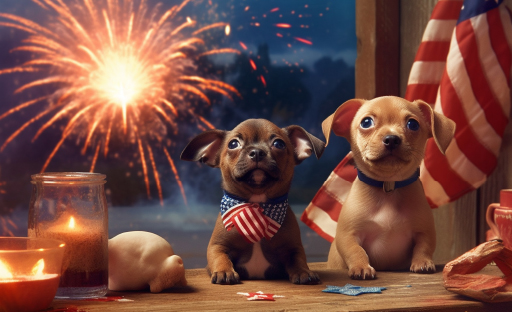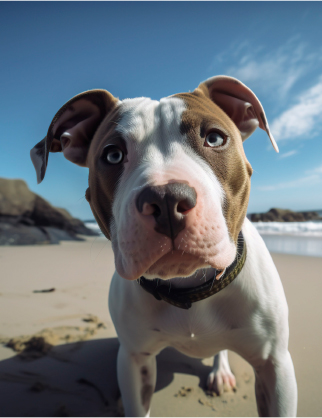KEEPING YOUR PET COOL
Summertime Tips & Tricks To Beat The Heat

As a dog trainer in NYC, I have many unique things to deal with when working with dogs. There are the loud city sounds of construction, traffic, sirens, all sorts of people, the high-rise elevator buildings, and the multiple door thresholds to pass through before stepping outside, not to mention the subway sounds rumbling below us.
To top it all off, global warming is now affecting seasonal changes, making each season more extreme and unpredictable. With the summer months upon us, we are likely to reach scorching temperatures.
HOT TIPS FOR A COOL DOG
Here are some tips to help keep your pooch cool during your walks in the city and some safety training tips for off-leash summertime if you are heading to the country or the beaches.
First, some reminders: A dog’s natural temperature is between 101-102, and because most have fur coats, keeping them as cool as possible is essential. Aside from panting, the only other area of a dog’s body that helps them cool down is through their sweat glands in their paw pads. Remember, your dog’s lifestyle differs significantly from its wild ancestors. Before domestication, dogs were able to adjust to outside temperatures more efficiently. Compare that to our modern-day pooches living alongside us in climate-controlled environments. Awareness of how high temperatures can affect your dog is important.
It is especially important to remember that the brachycephalic breeds (Pugs, French and English Bulldogs, Shih Tzus, Boston Terriers and Boxers) are more prone to overheating and heat exhaustion than other breeds. Be especially careful when playing and walking outside in the extreme heat.
Things to consider helping cool your pooch during those hot summer days.
· Cooling mats and cooling vests.
· Kiddie pools set up in your backyard or terraces for them to stand in cold water.
· Keep walks short on extra hot days and on the shady side of the streets.
· Time the walk to be extra early or later in the evenings to avoid the extra heat.
· One of my city tips is to stop at dog-friendly bank foyers to get a blast of their air conditioning while walking.
· Offer ice cubes, frozen watermelon, or frozen blueberries as cooling treats after a walk.
If you must use a muzzle on your dog outside, avoid using a mesh muzzle as it constricts the dog’s mouth, preventing them from being able to pant. Instead, use a basket muzzle as it is aerated and allows them to pant easily, which is crucial for them to cool themselves appropriately. Dogs can also drink water with a basket muzzle on. Always have a collar with an ID tag on in case your dog runs off, and make sure to microchip and register your pooch in case the collar and ID come off.
CALM & QUIET
Many dogs become very scared and anxious during the Fourth of July fireworks. So, if your pooch is likely to be nervous, be sure to give it a safe, quiet place in your home. A spacious partially covered crate, a playpen, or a gated-off area like your bedroom are good options.
I often suggest adding white noise to help drown out outside sounds, especially if the fireworks are nearby. Add high-value occupiers to keep them distracted. Some of my favorites are Busy Buddy twist-and-treat, hollow, sterilized bones filled with peanut butter or cream cheese, high-IQ puzzle games, and deer antlers or knuckle bones, which are great, too—adding some exercise and playtime before the festivities will also help to tire them out.
For the more anxious dogs, consider some natural calming aids like Thunder Shirts, but be sure to keep your home well-ventilated and extra cool with AC if you use one since they can overheat very quickly. I also suggest DAP collars (Dog Appeasing Pheromone) and DAP plug-ins and sprays. These products emulate the mother dogs’ hormones for their pups, which can often help during these times. Or talk to your vet for a stronger, prescribed, calming medication. CBD for dogs can sometimes help as well, but do your research and talk with your vet.
If you plan to let your dog off-leash on the beaches and in country settings this summer, the most important command I recommend is “COME/RECALL.” This command can also be practiced in building hallways, the backyard, or the dog park. It can become a lifesaving command.
COME commands a dog to go to its owner when they hear their voice. COME should never be associated with punishment, which would defeat the whole purpose of them wanting to get to you. You want to use a happy, elated voice with a higher-pitched tone and avoid using a stern voice.
Here is some guidance on teaching this command: 1. Place your dog in SIT/STAY if that’s a reliable behavior or have someone hold your dog at the other end of the room.
2. Call your dog’s name once with a happy, high-pitched tone to get their attention.
3. Then move your arm down with the open palm facing towards the dog while enthusiastically saying “COME.”
4. Once the dog comes to you, gently take hold of their collar from under their muzzle/chin, then mark with the word “YES” and follow with a treat from the other hand. This step aims to create acceptance from your pooch in having their collar handled without them squirming or resisting being held. Holding the collar before giving the treat teaches impulse control and maintains safety so your dog doesn’t run off again.
5. Repeat steps 1-4 for 5-10 repetitions in different parts of your home. The sequence is: first call your dog’s name, then say the command “COME,” then gently reach and hold the collar while marking “YES” with a treat. “YES,” tells a dog they have finished the job and serves as a release cue.
6. Once you have a reliable “COME” in one location, practice the command in different locations with different distances. Then, incorporate delayed rewards and jackpot rewards for faster responses.

Delayed rewards help with impulse control. Jackpot rewards mean two or three pieces of food/treat at one time instead of one. This keeps the dog more engaged the next time.
7. Once the COME command is reliable indoors, take it outdoors and repeat the above sequence.
MOTIVATION IS KEY
NOTE:
When outdoors, train this command with him/her on an extra-long leash and use a variety of high value treats to keep them motivated. Dogs don’t generalize very well, so be sure to master each location before moving to the next one. I usually suggest ten different locations and distractions while changing the treats.
If you are training a puppy this summer, remember they love to follow their owners, so be sure to take advantage of this when teaching “COME.” When a pup follows you, practice short-distance commands and gently introduce reaching for the collar. Include praising and treating as you do this. The goal is to turn the “COME” command into a pleasurable, reflexive behavior that is fun to do with you and your pup.
Another way to incorporate the command is to play round-robin “COME” with your dog and friends while at home. Start with everyone close together, gradually increase the distances, and then build up to them coming around corners.
We are building one success on top of another, so only proceed if the current level has become successful. Never be afraid to step backward to a level the dog is already good at. This enhances their confidence. All good dog trainers understand that regression and confusion are part of the learning process. However, we want to keep those emotional states to a minimum. Instead, happiness and creativity are the emotional states we want to elicit while working with our pups.
Slow and steady wins the race!




